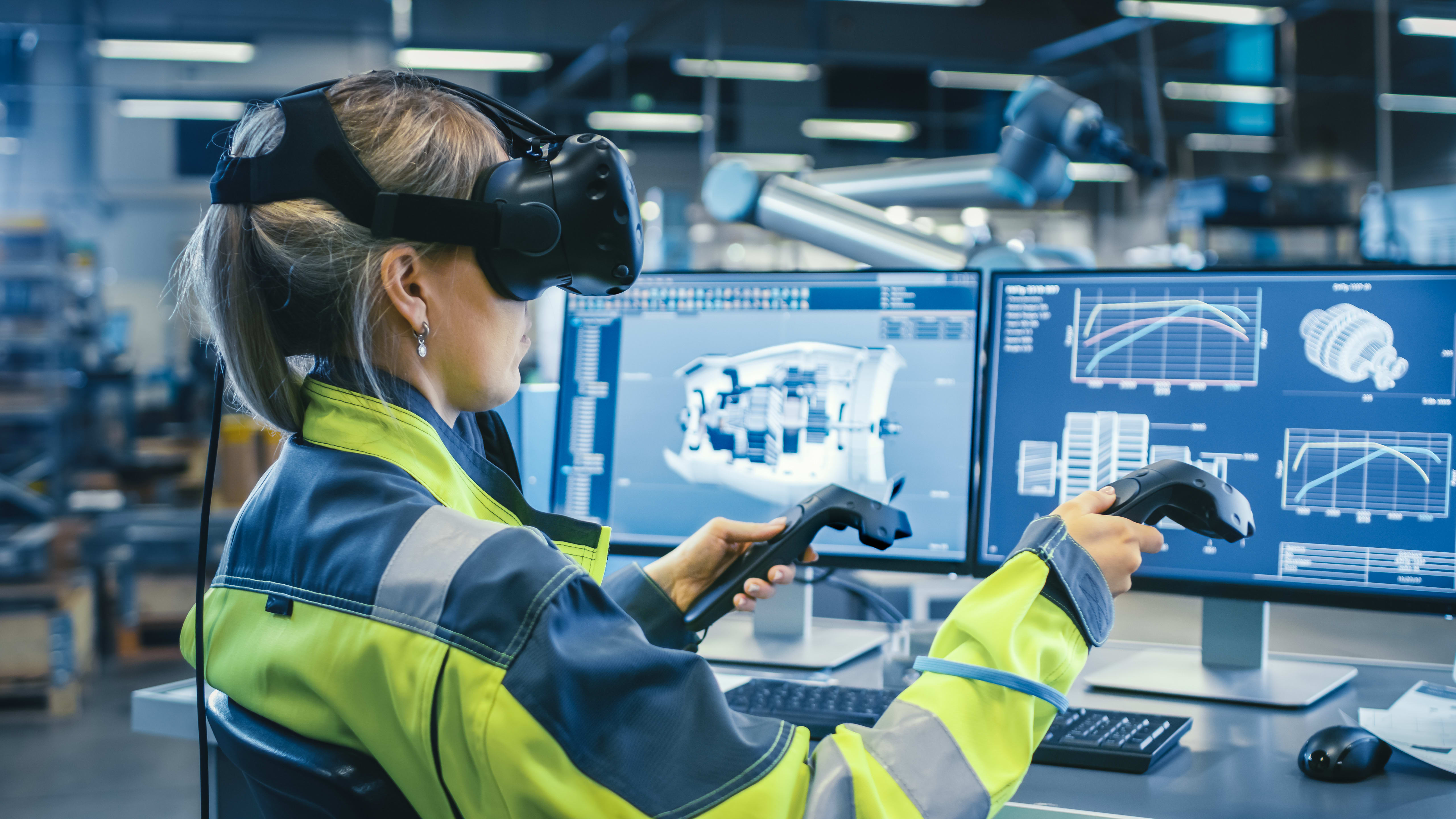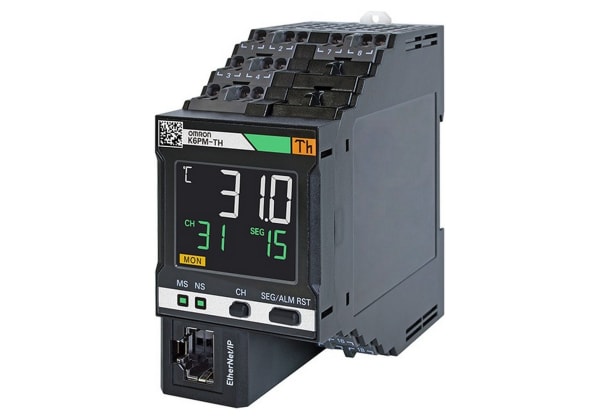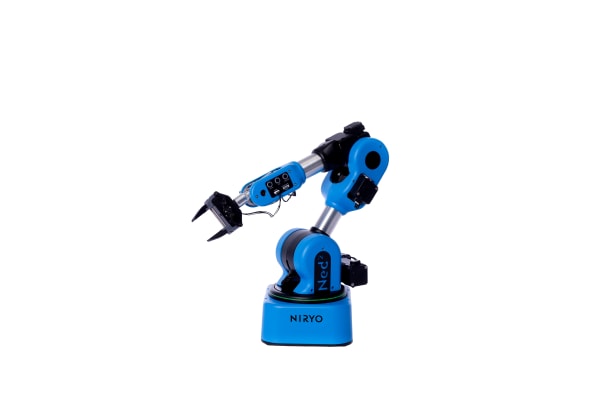- Published 23 May 2024
- Last Modified 7 Oct 2025
- 5 min
Augmented Reality for Maintenance
Augmented reality integrates digital data with the environment in real-time to enable everything from design and product development to training. Our guide examines what AR is – and how it is being used by manufacturers to improve maintenance regimes.

Reviewed by Stephen Bettles, Technical Support Engineer (May 2024)
Augmented reality (AR) is part of a suite of Industry 4.0 technologies that are transforming the manufacturing industry. Used for everything from product design to training, manufacturers are also exploring the potential of maintenance using augmented reality. This guide explains more about AR as one of the automation trends in maintenance.
What is Augmented Reality?
But first, just what is augmented reality? Augmented reality technology combines reality with a computer-generated overlay. AR integrates digital data with the environment of the person using it in real-time. That’s distinct from virtual reality, which creates a complete, immersive computer-generated experience. Augmented reality technology can be used to help consumers make purchase decisions and is also used by the entertainment industry in video games, for example. For industry, augmented reality provides a means of overlaying the physical world with digital information to train workers, conduct design and engineering work, or make production more efficient.
Maintenance using augmented reality is also possible. Maintenance and AR go well together because AR can help train workers in conducting maintenance activities or assist them in performing their duties. AR maintenance can replace cumbersome instruction manuals or diagrams on paper with more interactive and readily understandable training methods. AR – with an audio feed – can also be used remotely by experienced engineers to assist new workers. Augmented reality, along with VR, is a key technology of the fourth industrial revolution.
Augmented Reality Technologies
AR maintenance technologies include headsets, eyeglasses, artificial intelligence (which helps users to perform actions – by using voice prompts, for example), AR software, sensors, and plenty of processing power.
AR Examples
Along with industrial robots, Big Data, the Industrial Internet of Things, AI, and other technologies, AR is being used in manufacturing for several applications. Augmented reality examples include:
- Training and teaching new skill sets. Manufacturers use AR to simulate real-life activities in a virtual environment to train workers safely and effectively in manufacturing processes. They can learn how to operate expensive capital equipment without risk. If they make an error, the system informs them, and they learn the correct procedure
- Providing a safe, interactive overview of the environment. By interacting with simulations of a facility and the equipment within it, engineers can learn about the production environment and manufacturing processes in a safe setting
- Quality control. AR is capable of providing a detailed, high-resolution representation of a new product and information about it, allowing checking for defects. This enables engineers to conduct quality control in ways that could be difficult or even impossible with the naked eye
- Product design. Engineers are using AR to visualise new products and interact with them, adding or taking away features in a virtual environment rather than having to design and manufacture physical prototypes. This has the benefits of speeding up the design process and reducing cost
- Logistics and managing inventory. AR provides a means of helping workers organise and select goods and equipment in warehouses. For example, an operator using AR eyeglasses can find a piece of equipment or the right component for a manufacturing process rapidly, even among hundreds or thousands of items
Augmented Reality and Maintenance
Because it’s a great training tool, AR is well-suited to helping technicians learn how to conduct maintenance and repair activities. They can learn best practices for performing maintenance without weighty training manuals. AR allows them to visualise the task instead, which is a powerful way of learning. A job that might be particularly suited to learning via AR is replacing a critical component. Some maintenance activities are much more straightforward, and so maintenance and AR are not as beneficial.

Augmented Reality for Maintenance Benefits
AR as a maintenance and repair technology has several benefits, including simplifying training, improving maintenance quality, and helping speed up repair. Maintenance using AR has also reduced the need for onsite visits by engineers, who can instruct technicians remotely over the Internet using an AR system.
Reduce Downtime
Manufacturers can cut the amount of unplanned downtime they experience using AR maintenance. For example, rather than a skilled engineer having to travel to site to conduct repairs, they can immediately instruct a technician who is already there using AR maintenance. This speeds things up. Since maintenance using augmented reality helps to train workers precisely, it also plays a big part in ensuring equipment is running correctly, which makes an unscheduled shutdown less likely.
Improve Efficiency
Augmented reality can be used to standardise maintenance practices so that technicians follow the same procedures, which helps make maintenance more efficient. AR may also be used to enable technicians to work on machinery they are not familiar with by providing visual instructions and lists of tasks. This means an expert doesn’t have to be on hand to conduct maintenance, helping make the overall maintenance regime more efficient because a wider range of workers can conduct tasks.
AR and Remote Working
Augmented reality opens up the possibility of engineers solving maintenance issues and other problems remotely. If a field maintenance engineer comes across a problem they haven't experienced before, they can resolve it with an expert based elsewhere using AR for remote maintenance.
AR and Training
AR is proving its worth for training applications in numerous sectors including manufacturing. For example, at automotive factories, AR headsets can provide a complex interactive model of the vehicle to be assembled and the tools and machinery required to complete the job. This can help to visually train workers on how to manufacture the car before they set foot on the actual production line, minimising errors. Training of this quality could be hard to achieve in the classroom, and it would take much time and great expense.
Future of AR
Augmented reality is likely to become more commonplace in the future, with AR glasses and headsets used much more widely. Their proliferation will be aided by the increasing power of smartphones, which will be able to provide more in-depth and realistic AR experiences to the everyday user.
In the future, we can expect many more manufacturing businesses to take advantage of the capabilities of AR to speed up the product design process and organise manufacturing. Manufacturers that are using AR are also likely to start to give their suppliers access to their digital models, enabling enhanced efficiency and productivity across the supply chain.
When it comes to augmented reality in maintenance, companies have only scratched the surface of AR’s future potential. Showing technicians how to maintain equipment without the use of reams of technical manuals will be a growing AR and training application among engineering firms. However, there is still a need to properly train and test the practical competence of workers involved in the repair and maintenance of equipment. Stay tuned.
Did you know RS specialises in industrial maintenance and associated products? Visit us here.


